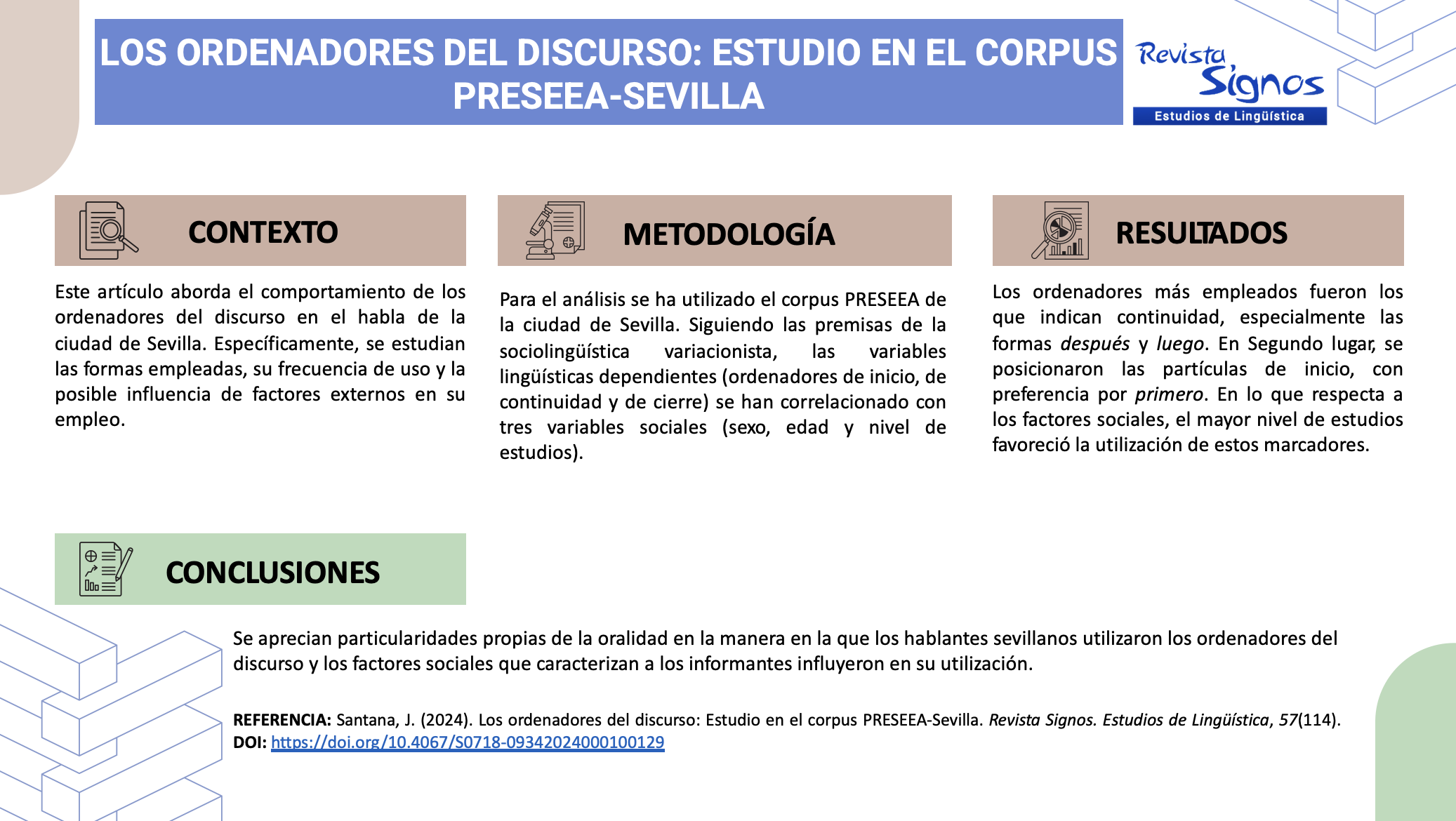Discourse Markers
A study in PRESEEA-Sevilla Corpus
Keywords:
discourse markers, information structuring markers, linking words, spoken Spanish, PRESEEA-Sevilla corpusAbstract
This research tackles a study of discourse markers based on a sample of spoken Spanish: the PRESEEA-Sevilla corpus. In relation to these discourse markers, known for being specialized in structuring the information within a speech, it has often been said that they adopt certain characteristics in a spontaneous, not subject to a previous preparation orality. In this regard, our purpose is to discover their frequency and their behaviour in a set of semi-directed surveys, also, in addition to that, ascertain the social influences that affect their use. The main results obtained indicate that: 1) discourse markers have a significant occurrence in our materials; 2) the continuity of the members in these series show an explicit marking, mainly with the variants ‘después’ and ‘luego’; and 3) gender, age and educational level of informants conditioned the distribution of these units.

Published
How to Cite
Issue
Section
License
Copyright (c) 2024 Revista Signos. Estudios de Lingüística

This work is licensed under a Creative Commons Attribution 4.0 International License.
Copyright agreement:
Authors who have a manuscript accepted for publication in this journal agree to the following terms:
Authors will retain their copyright and grant the journal the right of first publication of their work by means of this copyright agreement document, which is subject to the Creative Commons Acknowledgment License that allows third parties to share the work provided that its author and first publication in this journal are indicated.
Authors may adopt other non-exclusive license agreements for distribution of the published version of the work (e.g., depositing it in an institutional repository or publishing it in a monographic volume) as long as the initial publication in this journal is indicated.
Authors are allowed and encouraged to disseminate their work via the internet (e.g., in institutional publications or on their website) before and during the submission process, which can lead to interesting exchanges and increase citations of the published work (read more here).


